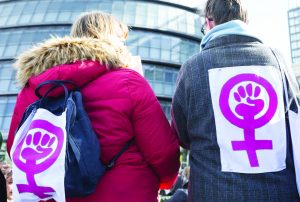On March 8th, it is celebrated The International Women Day. Every year a different theme highlights the struggles women around the world face. In 2020, the outstanding topic is gender equality.
The celebration organizers explain:
“An equal world is an enabled world.
Individually, we’re all responsible for our own thoughts and actions – all day, every day.
We can actively choose to challenge stereotypes, fight bias, broaden perceptions, improve situations and celebrate women’s achievements.
Collectively, each one of us can help create a gender equal world.
Let’s all be #EachforEqual.
Equality is not a women’s issue, it’s a business issue.
Gender equality is essential for economies and communities to thrive.

A gender equal world can be healthier, wealthier and more harmonious – so what’s not great about that?
The race is on for the gender equal boardroom, a gender equal government, gender equal media coverage, gender equal workplaces, gender equal sports coverage, more gender equality in health and wealth … so let’s make it happen.
The IWD 2020 campaign theme is drawn from a notion of ‘Collective Individualism.’
We are all parts of a whole. Our individual actions, conversations, behaviors and mindsets can have an impact on our larger society.
Collectively, we can make change happen. Collectively, we can each help to create a gender equal world.
The 2020 #EachforEqual campaign runs all year long. It doesn’t end on International Women’s Day.
The campaign theme provides a unified direction to guide and galvanize continuous collective action, with #EachforEqual activity reinforced and amplified all year”, IWD Team.
What is IWD?
International Women’s Day is a global day celebrating the social, economic, cultural and political achievements of women – while also marking a call to action for accelerating gender equality.
The History of IWD
In 1908, against a backdrop of terrible working condi-tions and exploitation, 15,000 women took to the streets in New York protesting for shorter hours, better pay and voting rights.
The next year the Socialist Party of America announced a National Women’s Day to honor the strikers, and in 1910 it went global – the Socialist International voted for the creation of a Women’s Day to advocate for suffrage. The first International Women’s Day was held in 1911, and more than a million people turned out to rallies in Europe.
For most of the 20th century International Women’s Day was acknowledged and celebrated by people at the grassroots level, a rallying point for social justice. It wasn’t until 1975 – International Women’s Year – that the United Nations adopted International Women’s Day on March 8th, when it is still held.



